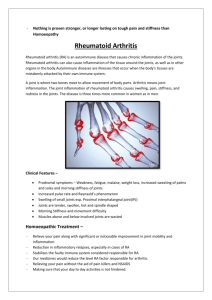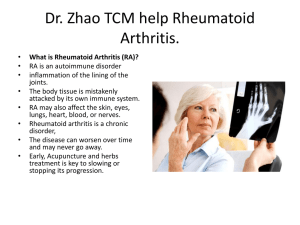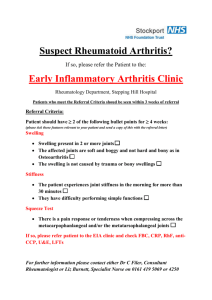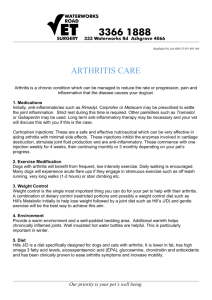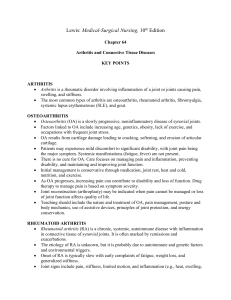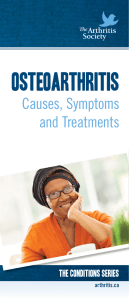Juvenile Rheumatoid Arthritis
advertisement
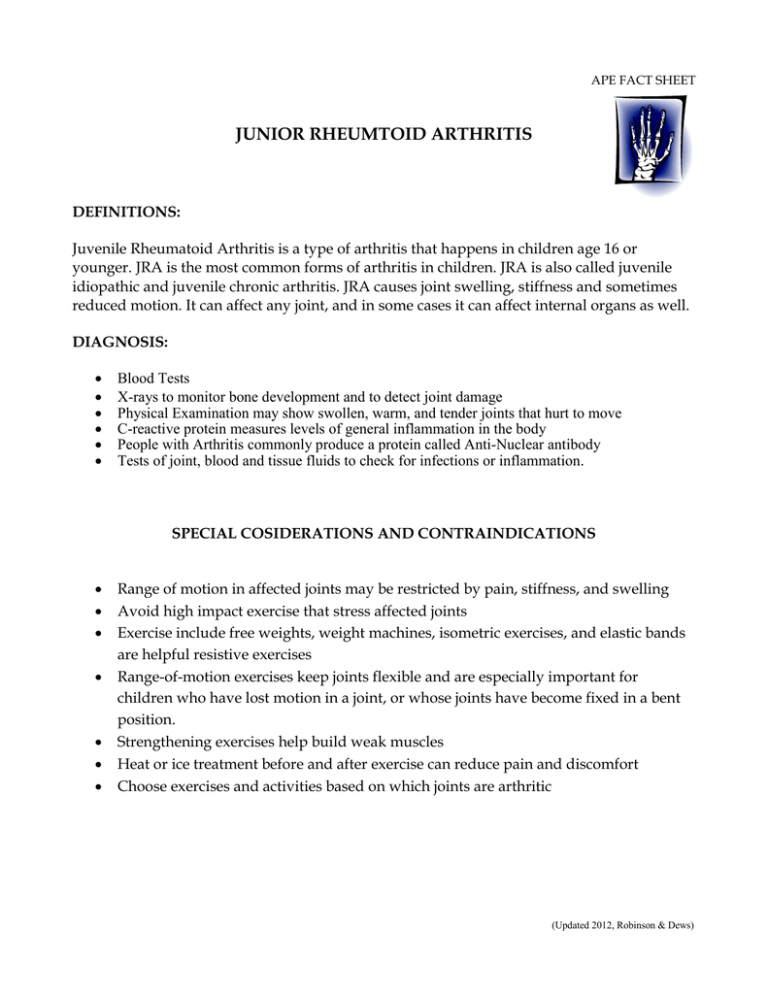
APE FACT SHEET JUNIOR RHEUMTOID ARTHRITIS DEFINITIONS: Juvenile Rheumatoid Arthritis is a type of arthritis that happens in children age 16 or younger. JRA is the most common forms of arthritis in children. JRA is also called juvenile idiopathic and juvenile chronic arthritis. JRA causes joint swelling, stiffness and sometimes reduced motion. It can affect any joint, and in some cases it can affect internal organs as well. DIAGNOSIS: Blood Tests X-rays to monitor bone development and to detect joint damage Physical Examination may show swollen, warm, and tender joints that hurt to move C-reactive protein measures levels of general inflammation in the body People with Arthritis commonly produce a protein called Anti-Nuclear antibody Tests of joint, blood and tissue fluids to check for infections or inflammation. SPECIAL COSIDERATIONS AND CONTRAINDICATIONS Range of motion in affected joints may be restricted by pain, stiffness, and swelling Avoid high impact exercise that stress affected joints Exercise include free weights, weight machines, isometric exercises, and elastic bands are helpful resistive exercises Range-of-motion exercises keep joints flexible and are especially important for children who have lost motion in a joint, or whose joints have become fixed in a bent position. Strengthening exercises help build weak muscles Heat or ice treatment before and after exercise can reduce pain and discomfort Choose exercises and activities based on which joints are arthritic (Updated 2012, Robinson & Dews) SPECIAL CONSIDERATIONS AND CONTRAINDICATIONS IN AQUATICS Several forms of eye inflammation are associated with various forms of juvenile arthritis, therefore, the swimmer should use swimming goggles and possible eye drops (after consultation with ophthalmologist). Schedule swimming for later hours when the individual does not suffer from typical morning stiffness Warm water exercise can help to relax muscles, decrease pain, and increase circulation. Information on this sheet contains only suggested guidelines. Each student must be considered individually, and in many cases, a physician’s written consent should be obtained. (Updated 2012, Robinson & Dews)
